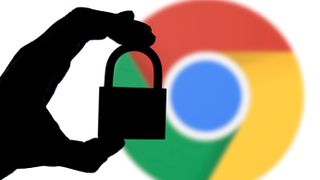Google Chrome is getting a serious HTTPS security update
Chrome 94 want to make your time online much more secure

Users of Google Chrome should soon be able to get online more safely than ever before following the announcement of a major security upgrade to the browser.
With Mozilla having already announced that Firefox will be shifting to includes an HTTPS-only mode, Google has now followed suit by announcing that Chrome is getting a new HTTPS-First Mode.
The new feature is due to be added to Chrome 94 which is schedule for release in September – but you can test it now.
- These are the best VPN services on the market
- Also check out our roundup of the best Windows 10 VPN
- And here's the best business VPN services around
To start with, the feature will attempt to establish a connection to a site using the HTTPS protocol. If this is not possible, Chrome will display a full screen warning that the connection is not secure. Google says that HTTPS-First Mode will be optional to start with, but it may become the default depending on the feedback it receives.
Although not official due for release until Chrome, anyone running the Canary build of Chrome 93 can try out HTTPS-First Mode right now. Start by heading to chrome://flags/#https-only-mode-setting, enabling the flag and restarting the browser. If you then visit Settings in Chrome, you'll find a new Always use secure connections option in advanced security settings.
Safety first
In addition to the arrival of HTTPS-First Mode, Google is also introducing a new icon in Chrome to indicate when an HTTPS connection is being used. At the moment, you'll see a padlock to the far left of the address bar whenever you visit a secure site, but Google found that very few people knew what this icon was supposed to be conveying.
With this in mind, the company is experimenting with replacing the padlock with a "more neutral" down arrow which can be used to access privacy and security information about the current site. When visiting a site that does not have an HTTPS certificate, the same Not Secure indicator will be displayed.
Are you a pro? Subscribe to our newsletter
Sign up to the TechRadar Pro newsletter to get all the top news, opinion, features and guidance your business needs to succeed!
If you want to enable this new indication method now, make sure you have Chrome 93 installed, pay a visit to chrome://flags/#omnibox-updated-connection-security-indicators. Use the drop-down menu to enable the setting and then restart Chrome.
There has been a steady move away from run-of-the-mill HTTP to HTTPS online in recent years. The encryption and additional security offered by HTTPS helps to protect against eavesdropping, and there has been a drive to make the protocol the preferred online standard.
- Check out our guide to the best anonymous browsers

Sofia is a tech journalist who's been writing about software, hardware and the web for nearly 25 years – but still looks as youthful as ever! After years writing for magazines, her life moved online and remains fueled by technology, music and nature.
Having written for websites and magazines since 2000, producing a wide range of reviews, guides, tutorials, brochures, newsletters and more, she continues to write for diverse audiences, from computing newbies to advanced users and business clients. Always willing to try something new, she loves sharing new discoveries with others.
Sofia lives and breathes Windows, Android, iOS, macOS and just about anything with a power button, but her particular areas of interest include security, tweaking and privacy. Her other loves include walking, music, her two Malamutes and, of course, her wife and daughter.
Most Popular


